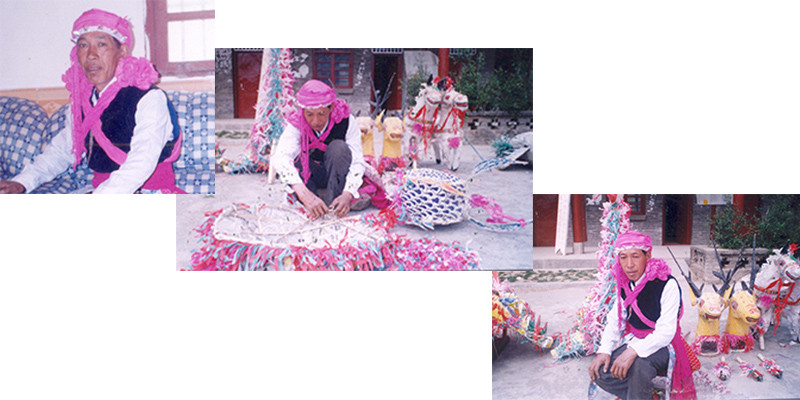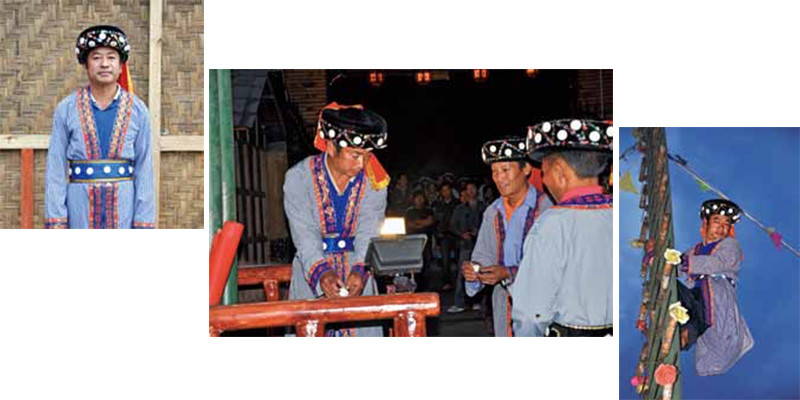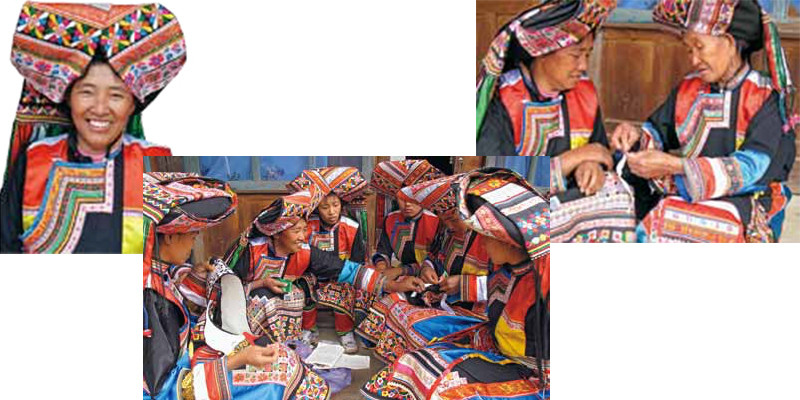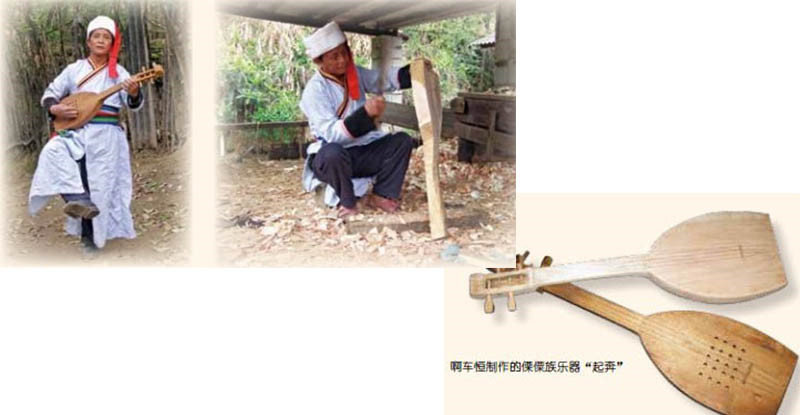 alt="Puer Surrounding Counties and Towns: Weekly & Special Local Markets Travel Guide"
/>
alt="Puer Surrounding Counties and Towns: Weekly & Special Local Markets Travel Guide"
/>
Lisu Ethnic Minority
Lisu is one of 55 ethnic minorities in China. Originating from the northern Qinghai-Tibet plateau, the Lisu ethnic group is a transnational minority group of China, Myanmar, India, and Thailand. The Lisu ethnic minority in China is mainly distributed in Yunnan, and Yunnan has a Lisu population of about 660,000.
Distribution
Lisu ethnic minority can be divided into two groups, south and north, Lisu language they speak also has some differences. The northern Lisu people mainly live in Nujiang Lisu autonomous prefecture, part in Lijiang, Diqing, Dali, as well as Sichuan’s Liangshan, Yanyuan, Yanbian, Muli, Dechang and other counties. The southern Lisu people are mainly distributed in Yingjiang county of Dehong prefecture, Baoshan city, Lincang city.
Feature of Lisu Areas
The Lisu people inhabit a mountainous area slashed by rivers. It is flanked by Gaoligong Mountain on the west and Biluo Mountain on the east, both over 4,000 meters above sea level. The Nujiang River and the Lancang River flow through the area, forming two big valleys. The average annual temperature along the river basins ranges of 17-26℃, and the annual rainfall averages 2,500 millimeters. Main farm crops are maize, rice, wheat, buckwheat, sorghum and beans. Cash crops include ramie, lacquer trees and sugarcane. Many parts of the mountains are covered with dense forests, famous for their China firs. In addition to rare animals, the forests yield many medicinal herbs including the rhizome of Chinese gold thread and the bulb of fritillary. The Lisu area also has abundant mineral and water resources. Religion of Lisu Ethnic Minority Lisu people generally believe in primitive religion, which takes nature worship and soul concept as its basic content, and kills animals and sacrifices in case of disease and disaster as its main form, existing in Lisu areas. Since modern times, Christianity and Catholicism have been introduced into Nujiang area, and some Lisu people have converted to Christianity, while a few have embraced Catholicism.
Culture Heritages of Lisu Ethnic Minority
Folk Song of Lisu Ethnic Minority in Lushui Guake Dance of Lisu Ethnic Minority Kuoshi Mugua- Narrative Poem of Lisu Minority Folk Song of Lisu Ethnic Minority in Nujiang Baishi Folk Song of Lisu Ethnic Minority in Nujiang Waqiqi Dance of Lisu Ethnic Minority
Inheritors
He Zhigao Hu Xuezhong Yu Zhaodi Li Biqing Deng Yongmei He Zhigui A Cheheng Li Guoshu Mi Sancai Yu Xianjun Li Shida Li Xuehua Deng Sikua Cao Fuchang Cai Fuyun Cai Xuezhen Yu Xinzhi Yu Ziliang Feng Yunbo Yu Xiuzhi Li Guilan Che Siheng Du Fudi Hu Yuxiu Li Xuehua Li Xueqiang Xiong Ziyi Wang Li
Autonomous Areas
Nujiang Lisu Autonomous Prefecture Weixi Lisu Autonomous County
Lisu Ethnic Towns
Liming Lisu Ethnic Town Mucheng Yi and Lisu Ethnic Town Biaocun Lisu Ethnic Town Miaowei Lisu Ethnic Town Zhongying Lisu and Yi Ethnic Town Junsai Wa, Lahu, Lisu and Deang Ethnic Town Wanbi Lisu and Dai Ethnic Town Sudian Lisu Ethnic Town Tuoding Lisu Ethnic Town Xiaruo Lisu Ethnic Town Cuiyu Lisu and Pumi Ethnic Town Chuanfang Lisu and Dai Ethnic Town Yongxing Lisu Ethnic Town Tongda Lisu Ethnic Town Xinzhuang Lisu and Dai Ethnic Town Songping Lisu and Yi Ethnic Town Guanghua Lisu and Yi Ethnic Town Dongfeng Lisu Ethnic Town Dongshan Lisu and Yi Ethnic Town Liude Lisu and Yi Ethnic Town
Festivals and Activities of Lisu Ethnic Minority
Kuoshi Festival in Huaping County Kuoshi Festival in Lufeng County Saizhuang(Costume Competition) Festival in Lufeng Dragon Worship Festival in Xiangyun Qiren Festival in Xiangyun County Knife-ladder-climbing Festival in Yangbi County Kuoshi Festival in Binchuan County Kuoshi Festival in Yunlong County Kuoshi Festival in Yongping County Kuoshi Festival in Yingjiang County Tuoxiangpi Festival in Deqin and Weixi Easter Day of Lisu Ethnic Minority Thanksgiving Day of Lisu Ethnic Minority Shouhuo(Harvest) Festival of Lisu Ethnic Minority Daogan Festival of Lisu Ethnic Minority Torch Festival of Lisu Ethnic Minority Spring Bathing Festival of Lisu Ethnic Minority Christmas Day of Lisu Ethnic Minority Kuoshi Festival of Lisu Ethnic Minority
Lisu Villages
China No.1 Lisu Ethnic Village Sanjiacun Village Baofengsi Village Hecun Village Laolime Village Lilame Village Bailongtan Village
Kee Reading
Gudang Village Lisu Ethnic Culture Protection Area in Maji Town of Fugong County, Nujiang Tongle Village Lisu Ethnic Culture Protection Area in Yezhi Town of Weixi County, Diqing

 7 Days GolfingTour
7 Days GolfingTour
 8 Days Group Tour
8 Days Group Tour
 8 Days Yunnan Tour
8 Days Yunnan Tour
 7 Days Shangri La Hiking
7 Days Shangri La Hiking
 11 Days Yunnan Tour
11 Days Yunnan Tour
 6 Days Yuanyang Terraces
6 Days Yuanyang Terraces
 11 Days Yunnan Tour
11 Days Yunnan Tour
 8 Days South Yunnan
8 Days South Yunnan
 7 Days Tea Tour
7 Days Tea Tour
 8 Days Muslim Tour
8 Days Muslim Tour
 12 Days Self-Driving
12 Days Self-Driving
 4 Days Haba Climbing
4 Days Haba Climbing
 Tiger Leaping Gorge
Tiger Leaping Gorge
 Stone Forest
Stone Forest
 Yunnan-Tibet
Yunnan-Tibet
 Hani Rice Terraces
Hani Rice Terraces
 Kunming
Kunming
 Lijiang
Lijiang
 Shangri-la
Shangri-la
 Dali
Dali
 XishuangBanna
XishuangBanna
 Honghe
Honghe
 Kunming
Kunming
 Lijiang
Lijiang
 Shangri-la
Shangri-la
 Yuanyang Rice Terraces
Yuanyang Rice Terraces
 Nujiang
Nujiang
 XishuangBanna
XishuangBanna
 Spring City Golf
Spring City Golf
 Snow Mountain Golf
Snow Mountain Golf
 Stone Mountain Golf
Stone Mountain Golf












 What Our Customers Say?
What Our Customers Say?
